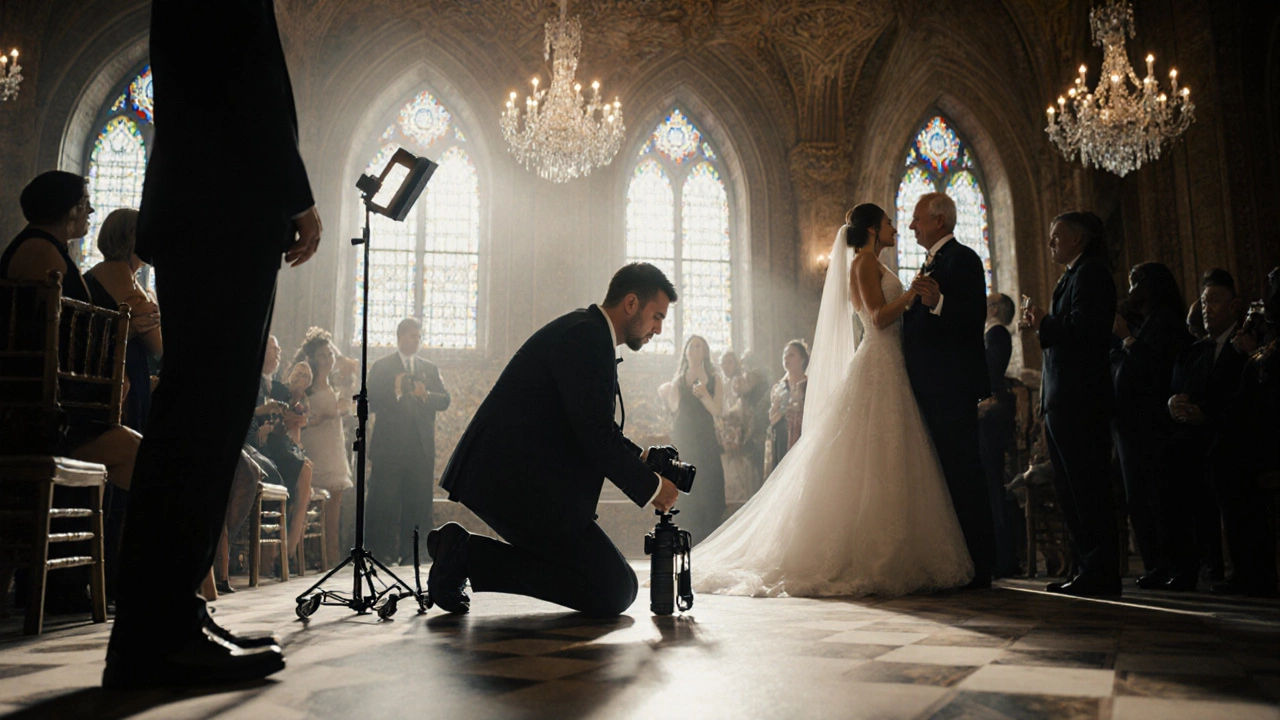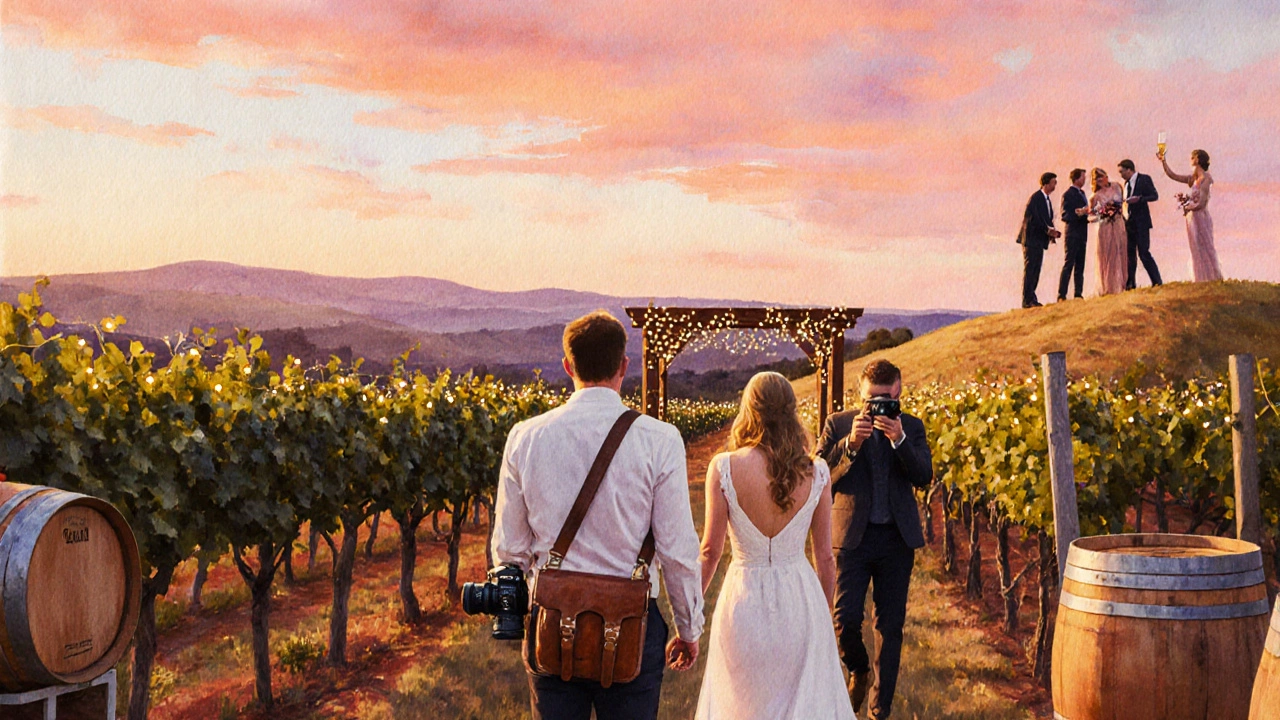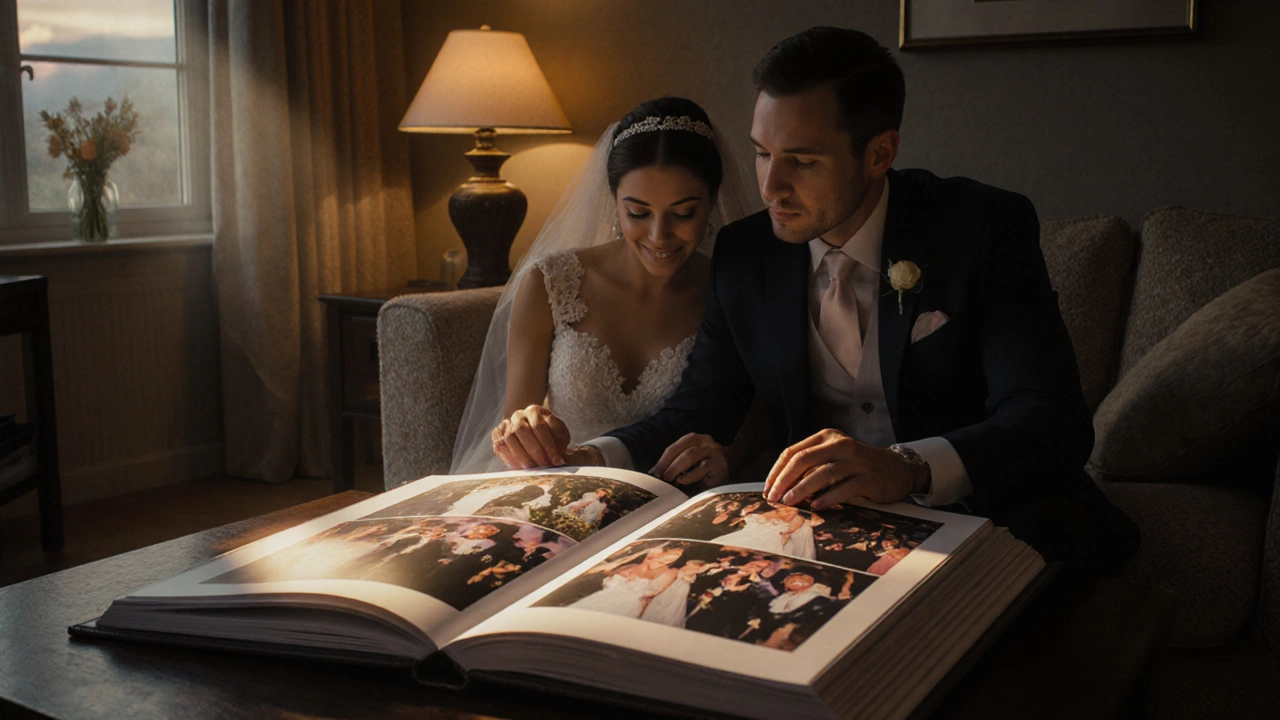Wedding Photographer Value Calculator
Calculate Your Investment Value
Get personalized recommendations based on your wedding budget and needs
Your Wedding Details
Key Considerations
Your Value Assessment
Imagine scrolling through your wedding album ten years from now. The faces, the dress, the venue are all still vivid, but the moments that truly make you smile are the ones captured by a skilled eye. Wedding photographer is a professional who specializes in documenting the ceremony, reception, and all the candid moments that happen in between. The big question most couples face is whether the extra money spent on a top‑tier photographer actually pays off. Below we break down the factors that turn a good photographer from a luxury into a smart investment.
What Makes a Photographer "Good"?
A "good" wedding photographer usually excels in three areas: technical skill, artistic vision, and reliability.
- Technical skill: Mastery of exposure, focus, and lighting. For example, using a DSLR camera with high‑resolution sensors ensures crisp detail even in low‑light receptions.
- Artistic vision: The ability to frame emotions, use composition to tell a story, and choose moments that feel timeless.
- Reliability: Punctuality, a clear contract, backup equipment, and a calm demeanor on the big day.
When you interview photographers, ask to see their portfolio and specifically look for consistency in lighting, color tone, and candid moments.
How to Evaluate the Value of a Photographer
Value isn’t just the price tag; it’s the return on emotion, memory preservation, and even future financial gain (think of selling prints or using images for thank‑you cards).
- Check the average industry pricing. In Australia, a mid‑range photographer charges around AU$2,500-$4,000, while high‑end professionals often exceed AU$8,000.
- Consider the package inclusions. Does the fee cover an engagement shoot, a second shooter, post‑processing, a physical photo album, and digital delivery?
- Ask about equipment. Professionals who invest in medium format cameras or high‑end lighting equipment generally deliver richer detail and better low‑light performance.
Cost vs. Benefit: A Quick Comparison
| Tier | Typical Price (AU$) | Key Inclusions | Value Score* (1‑10) |
|---|---|---|---|
| Budget | 1,500-2,500 | 1 photographer, basic editing, digital gallery | 5 |
| Mid‑range | 2,500-4,500 | 1‑2 shooters, engagement session, album, extensive editing | 7 |
| High‑end | 5,000-9,000+ | Multiple shooters, premium album, cinematic video, full post‑production | 9 |
*Value Score reflects the combination of artistic quality, coverage breadth, and post‑production polish.

Real‑World Scenarios: When Paying More Makes Sense
Scenario 1 - Destination Wedding: You’re flying to a remote vineyard in the Barossa Valley. A photographer who travels with you, brings backup gear, and knows how to work with natural light will capture the venue’s unique charm without a hitch.
Scenario 2 - Large Guest List: Over 250 guests means multiple moments happening simultaneously. A second shooter ensures you don’t miss the father‑daughter dance while the main photographer works the ceremony.
Scenario 3 - Artistic Preference: If you love photojournalistic storytelling, a photographer with a strong candid portfolio will deliver images that feel like a narrative rather than posed portraits.
Potential Pitfalls of Cutting Costs
Going for the cheapest option can backfire in several ways:
- Insufficient backup equipment leads to lost shots if a camera fails.
- Poor post‑processing may result in under‑exposed or over‑saturated images.
- Lack of a shot list can cause missed key moments like cake cutting or bouquet toss.
These gaps often mean you’ll need to hire a second photographer after the fact or settle for less‑than‑ideal memories.

How to Make the Decision Confidently
- Set a photography budget early. Aim for 10-12% of your total wedding budget - a rule many planners follow.
- Shortlist three photographers who meet your style and price criteria.
- Review contracts carefully. Look for clauses about delivery timeline, number of edited images, and image licensing rights.
- Ask for a test shoot. A brief engagement session lets you gauge how they interact with you and how quickly they edit.
- Consider the long‑term value. A high‑quality album or a set of oversized prints can become heirlooms for future generations.
Following this checklist ensures you spend wisely while still capturing the day the way you envision.
Final Verdict: Is a Good Photographer Worth It?
The answer depends on what you value most. If the emotional impact of reliving your wedding day matters as much as the venue or cake, investing in a skilled photographer is a smart move. The wedding photographer cost becomes an investment in memories that last a lifetime, often paying off in emotional return far beyond the price tag.
Frequently Asked Questions
How much should I allocate for a wedding photographer?
Most planners recommend budgeting 10-12% of the total wedding cost. For a AU$30,000 wedding, that’s roughly AU$3,000-$3,600.
What does a typical photography package include?
Common inclusions are the ceremony coverage, reception coverage, an engagement session, a photo album, a USB drive of edited images, and sometimes a second shooter or a short highlight video.
Is it worth paying for a second shooter?
For weddings with large guest lists or multiple venues, a second shooter captures parallel events-like the groom’s first look and the best man’s speech-ensuring nothing is missed.
How long does it take to get my wedding photos?
Delivery times vary, but most professionals provide a gallery within 4-6 weeks and a printed album within 8-12 weeks.
Can I negotiate the contract?
Yes. Many photographers are flexible on travel fees, extra hours, or added prints if you discuss your budget openly during the proposal stage.
